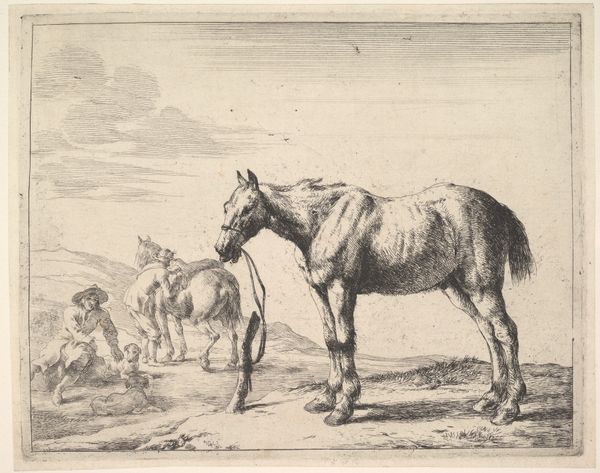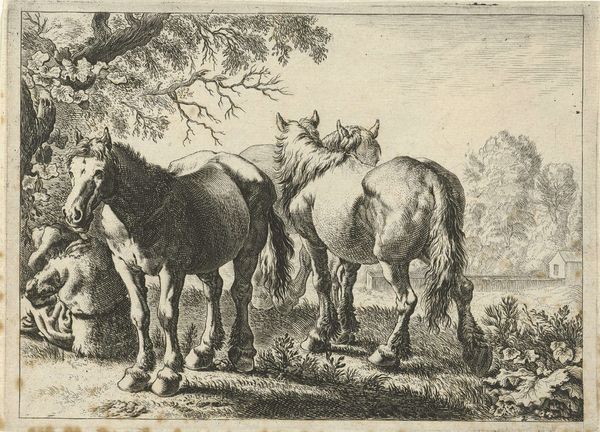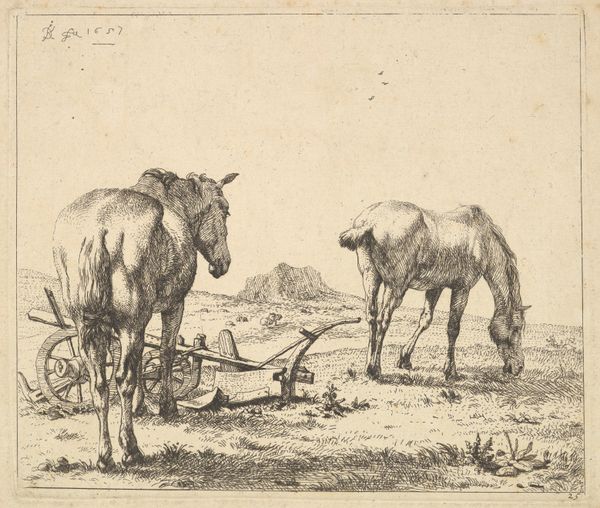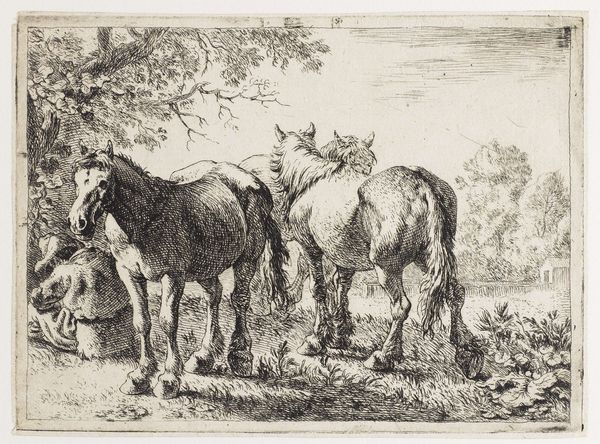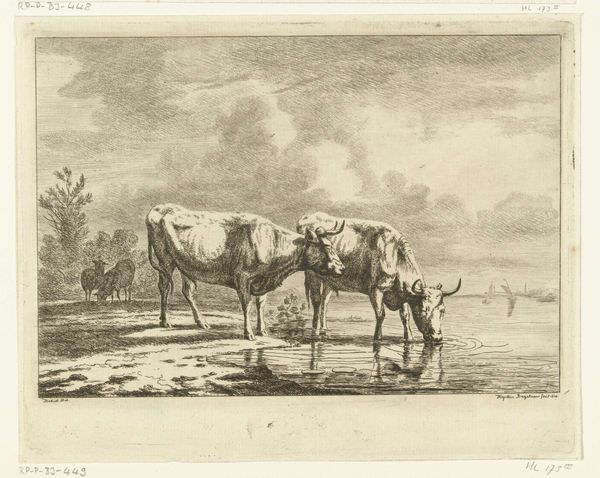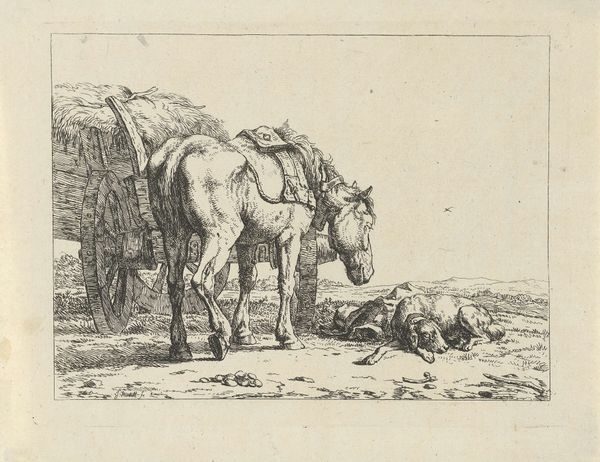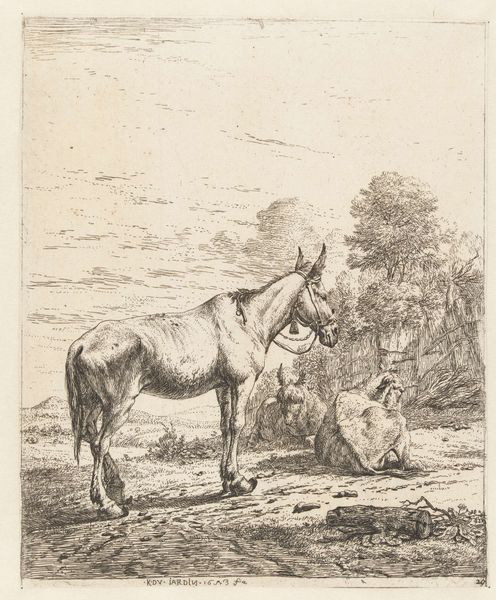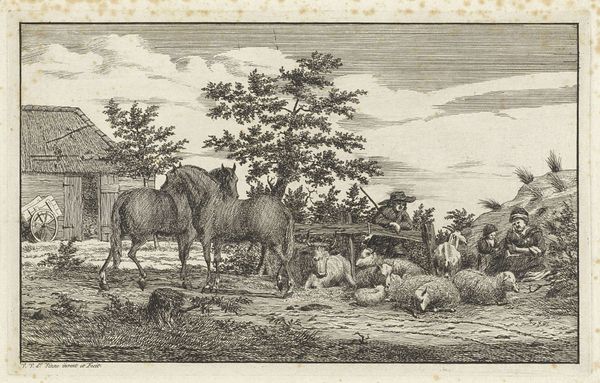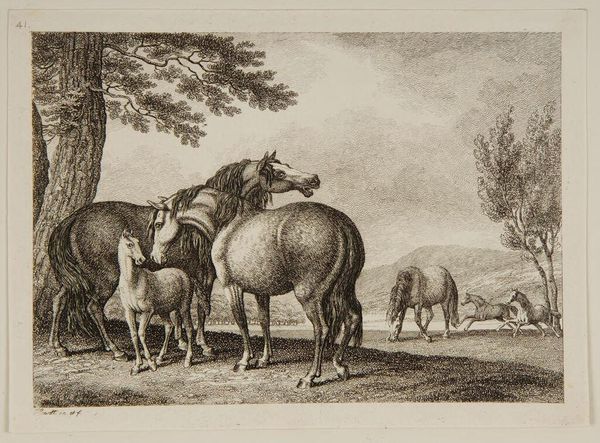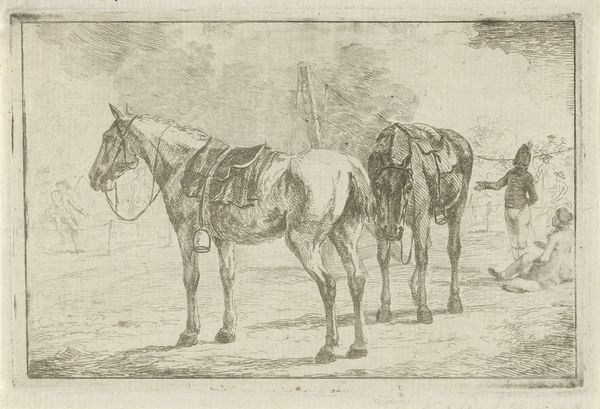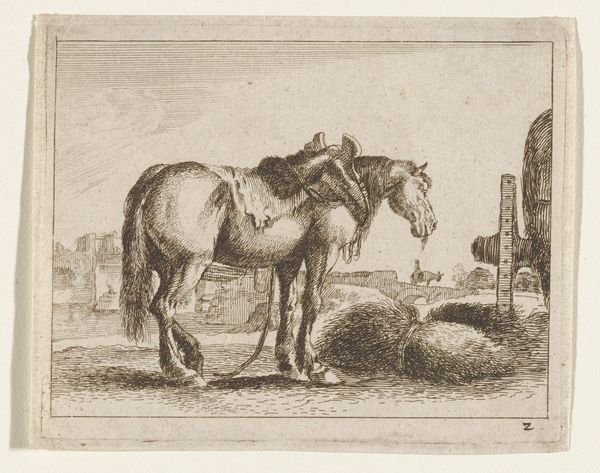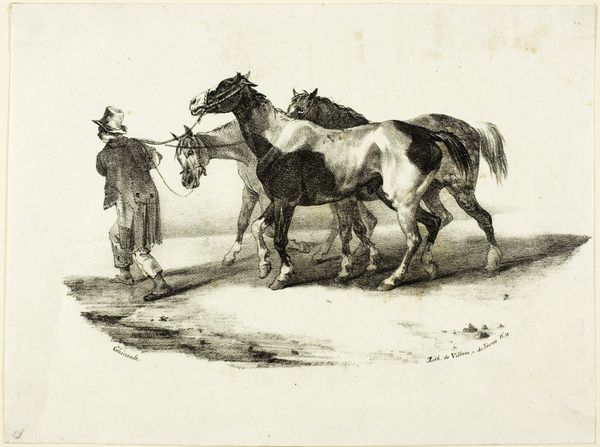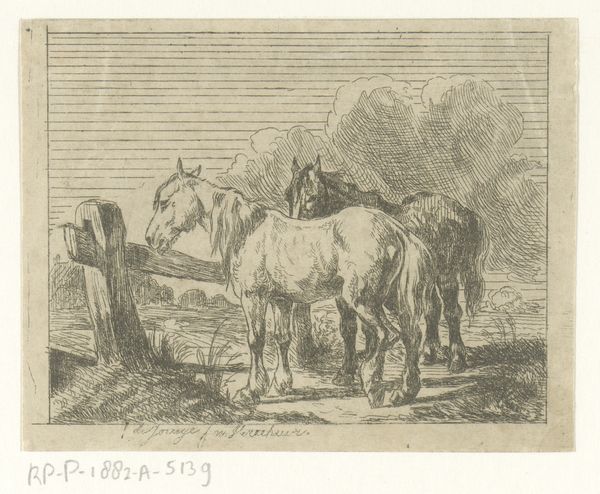
print, etching
#
animal
# print
#
etching
#
landscape
#
realism
Dimensions: height 145 mm, width 190 mm
Copyright: Rijks Museum: Open Domain
Jacobus Cornelis Gaal created this print, "Four Horses and Two Foals," using etching techniques. Look closely, and you’ll see the finely-engraved lines that create the image. To achieve this, the artist would have covered a metal plate with a waxy, acid-resistant coating, then drawn the composition with a sharp needle, exposing the metal. The plate was then submerged in acid, which bit into the exposed lines, creating grooves. The deeper the bite, the darker the line in the final print. This labor-intensive process allowed for the creation of multiple, identical images. In Gaal’s time, prints were increasingly popular, as they made art accessible to a wider audience. The scene itself reflects a romantic view of rural life, yet even that idealized vision came to us through an industrializing process. So next time you see a print, consider the layers of skill and labor involved, and how those processes have shaped our understanding of art itself.
Comments
No comments
Be the first to comment and join the conversation on the ultimate creative platform.
